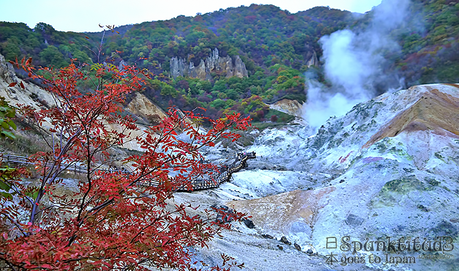
Located directly south of Sapporo city, Noboribetsu is one of Hokkaido’s most famous hot spring resort areas surrounded by a virgin forest 200 metres above sea level. Noboribetsu is a part of Shikotsu-Toya National Park.
One of the best things to do during the cool Autumn weather, is to indulge in a hot spring bath while taking in the majestic sight of nature’s red plumage of autumn leaves, and I was blown away by the scenic view that greeted me at the hot spring town of Noboribetsu (登別温泉).
While Noboribetsu comprises the nearby towns of Noboribetsu, Horobetsu and Washibetsu, most visitors (mainly Japanese) flock to the hot spring town of Noboribetsu Onsen 登別温泉, 6 km inland (15mins by car) from Noboribetsu itself. Founded on 13 September 1869, it has a population of 54,000 with a total area of 212.11 km2.
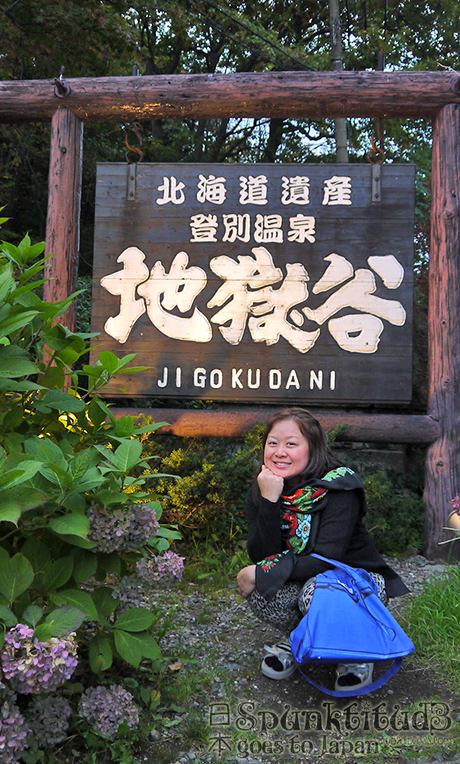
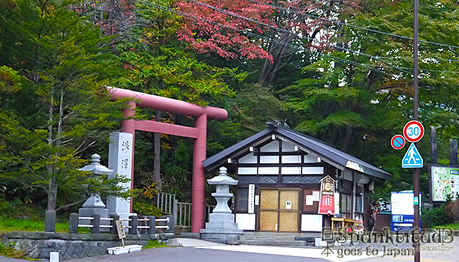
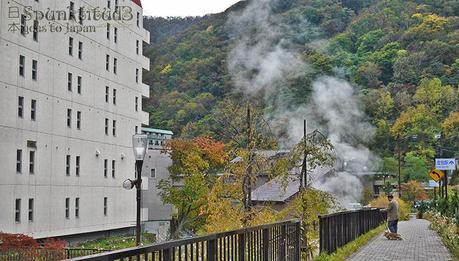
The hot spring resort area is renown for its wide range of hot springs – it boasts 9 kinds of hot spring baths incorporating different qualities, including a sulfur spring (most popular), a ferruginous spring and an alum spring which makes the skin beautiful (I agree!). This much variety is hard to find in hot springs anywhere else in the world, and the quality of the minerals together make Noboribetsu one of the world’s most exceptional hot springs.
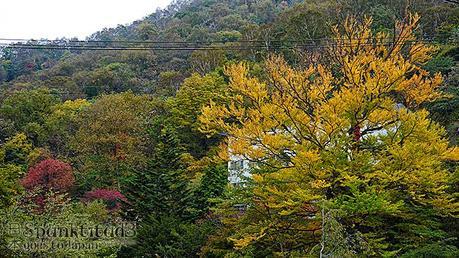
Mesmerizing foliage for an urbanite
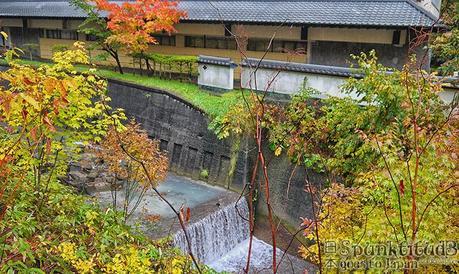
This, is not a huge drain – it’s hot spring water. I felt like jumping into a drain for once.
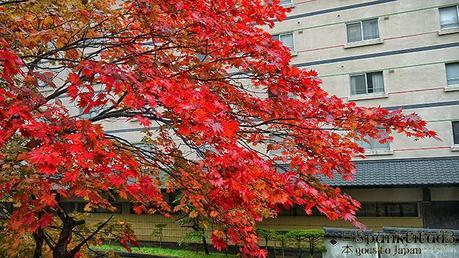
Do I still need to say – it’s autumn ;)
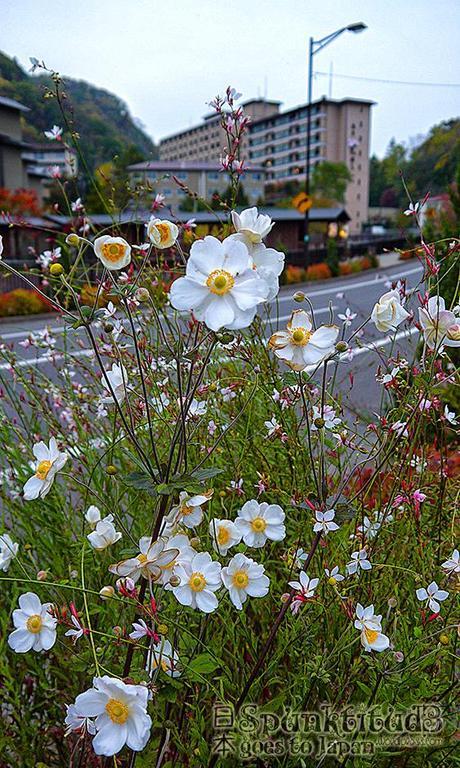
Even the roadside flowers are growing so prettily, must be the spring water
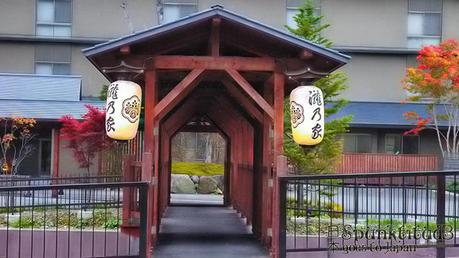
Takinoya
An awesome accommodation choice at Noboribetsu

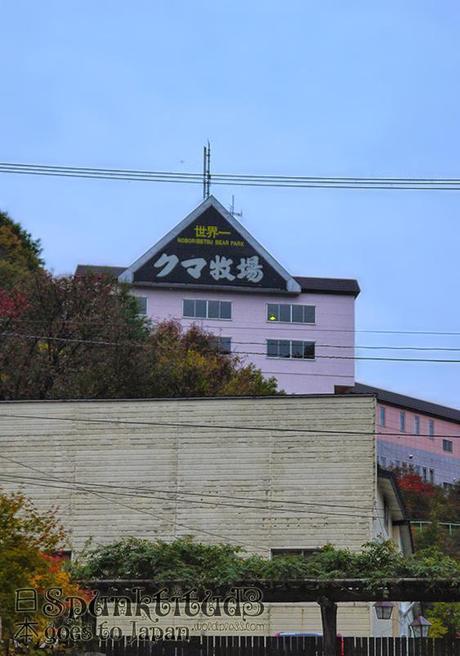
Kumabokujo クマ牧場 Bear Farm
One of the tourist attractions at Noboribetsu. I would rather see bears in their natural habitat than caged up to perform tricks, so I gave the place a miss.
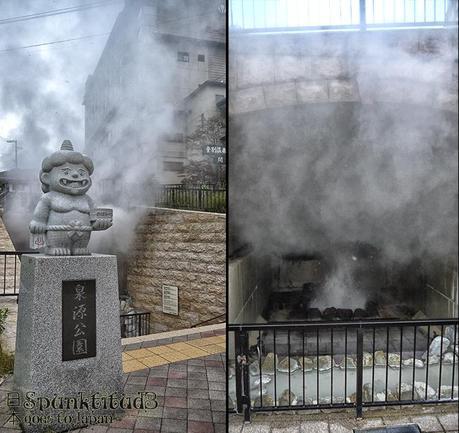
Sengen Park features a geyser that erupts from beside the hot spring water stream flowing from Hell Valley
Visitors can experience the eruption of the geyser at intervals of approximately three hours. There is the sound of pressure building, followed by the eruption of the geyser, which is accompanied by a cloud of steam. With such an angry eruption, I shudder about seeing the Valley itself.
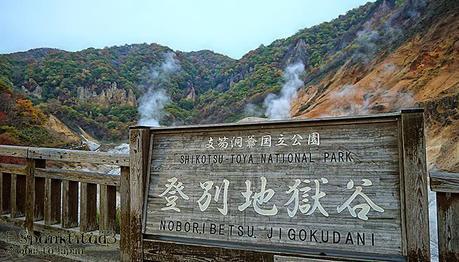
The most impressive scene at Noboribetsu is Jigoku Valley 地獄谷 (Hell Valley), a 450-meter-diameter mouth of a volcano which produces 3,000 litres of hot water per minute. Yellow volcanic gas seeps out from the surface of the rocks and it is this strong smell of sulphuric smoke that gives it an image of hell.
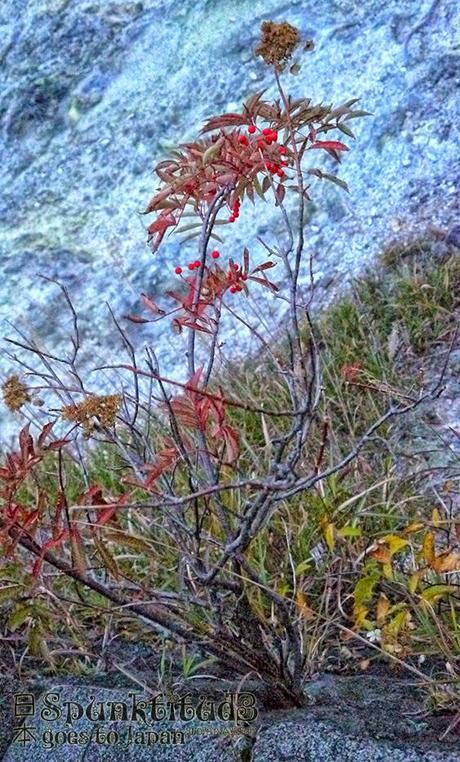
I find it a miracle that something as beautiful as these berries can still grow out of hell. It shows there is always hope in life :)
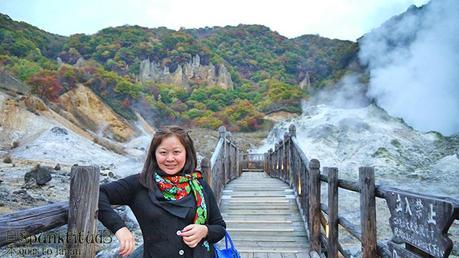
A customary “been-here” shot ;)
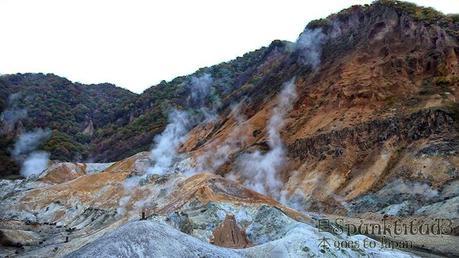
The barren landscape does resemble hell
You can experience the dynamics of jigoku, or “Hell,” named as such for its strong smell of sulfur while hot water, vapors and volcanic gas escape from the crater, formed approximately ten thousand years ago.
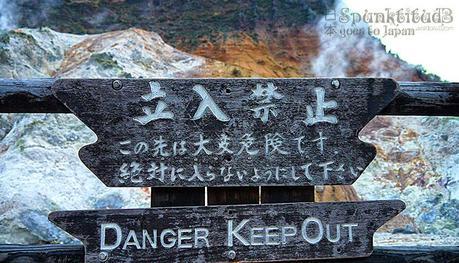
Enter and be scalded – or cooked
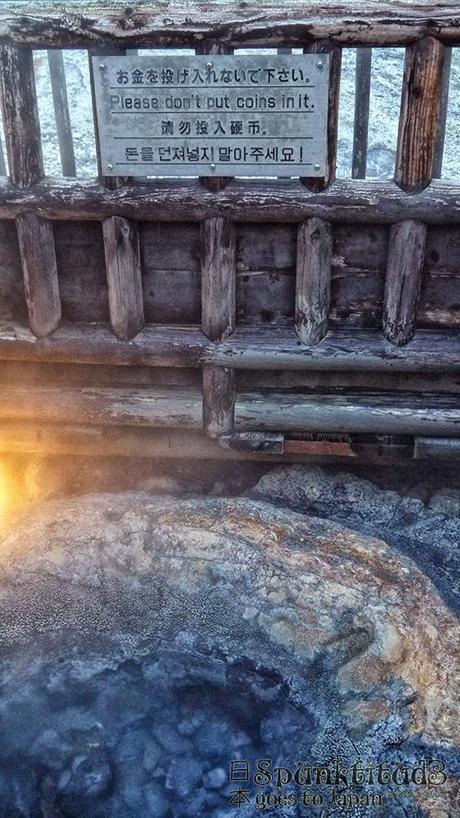
It’s quite amusing how every tourist treats a hole with water in it as a wishing well. One thing for sure – no one is going to fish the coins out of a 90 degrees Celsius pond!
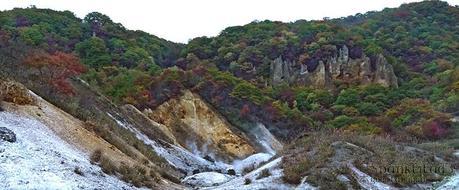
Awesome landscape. I stood still for 5mins, taking in the sights.
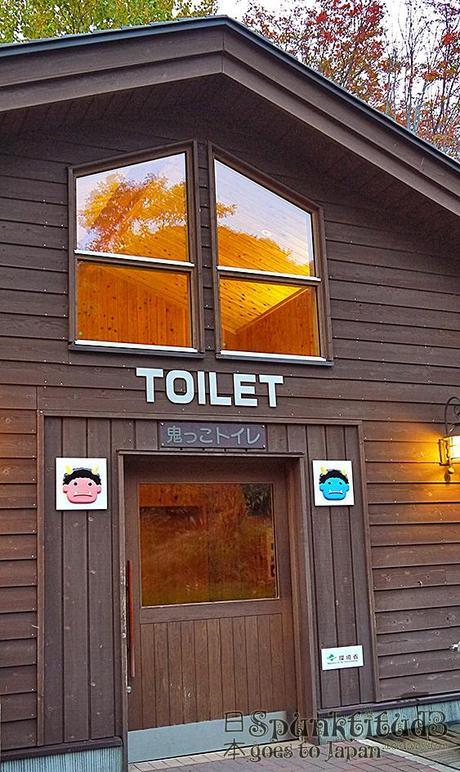
Even the toilet signs are represented with Hell Valley’s mascots. Question is – which is the Ladies?!
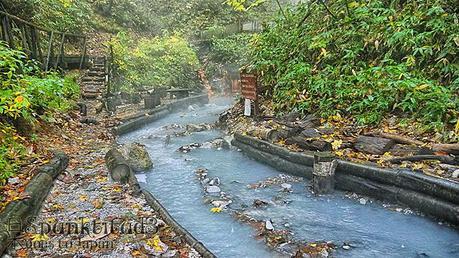
Oyunumagawa Natural Foot Bath
Throw off your shoes and enjoy a hot relaxing foot soak after hiking your way to this hot spring stream.
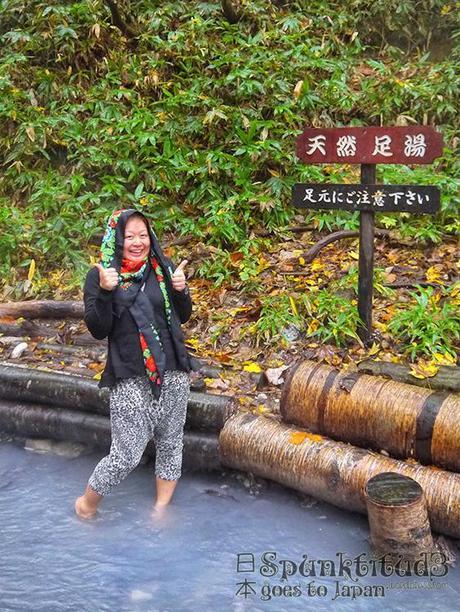
Even the rain couldn’t dampen our spirits and excitement!
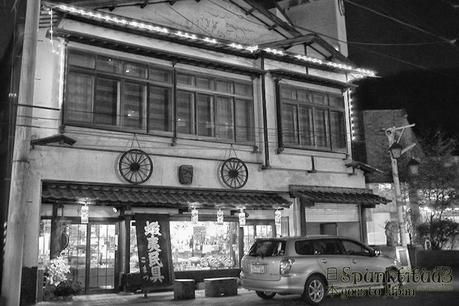
Nightfall soon came, and we hurried back to explore the town. Being a resort town, it was relatively quiet with some shops selling seafood produce and tourist souvenirs.
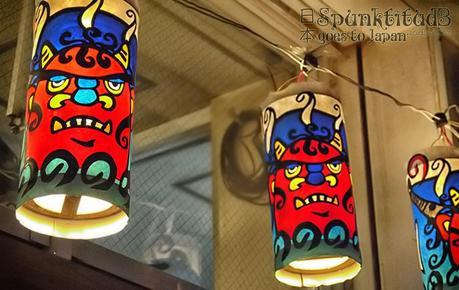
Noboribestu is well-known for flower cod roe, salmon roe and onikama (boiled fish paste). Souvenirs include carved wooden bears/dolls, and various candies.

Getting acquainted with the local deities
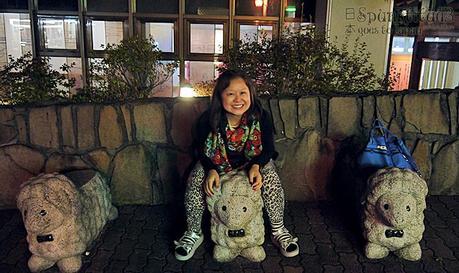
The Silence of the Lambs
From being squashed by a big buffalo.
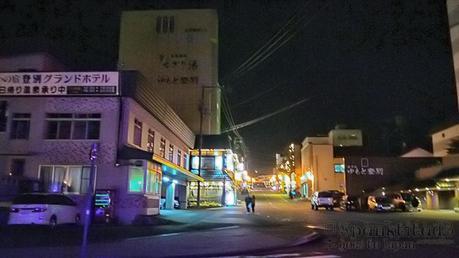
The chill soon got the better of us, and we headed back to our hotel in anticipation of a hot midnight onsen soak.

We chose a Japanese-style room
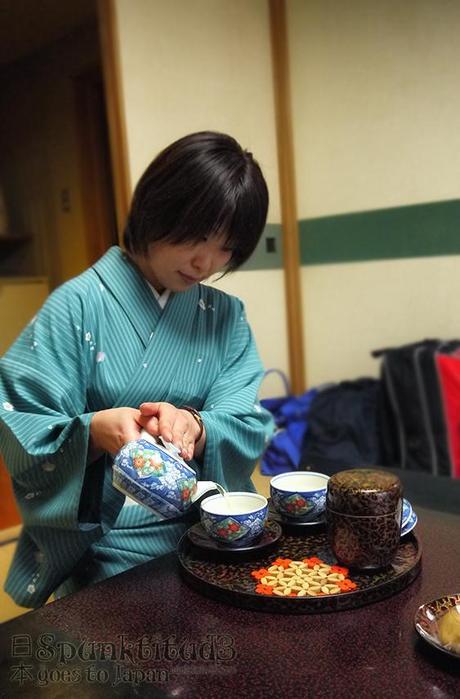
Having tea prepared for us

しあわせ (happiness!)
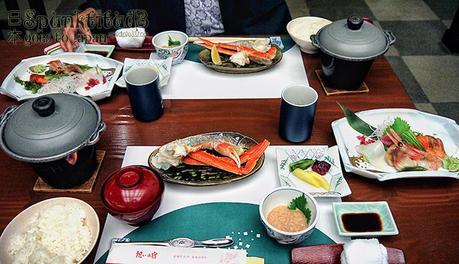
Dinner time!

All decked out in a yukata and enjoying my crab
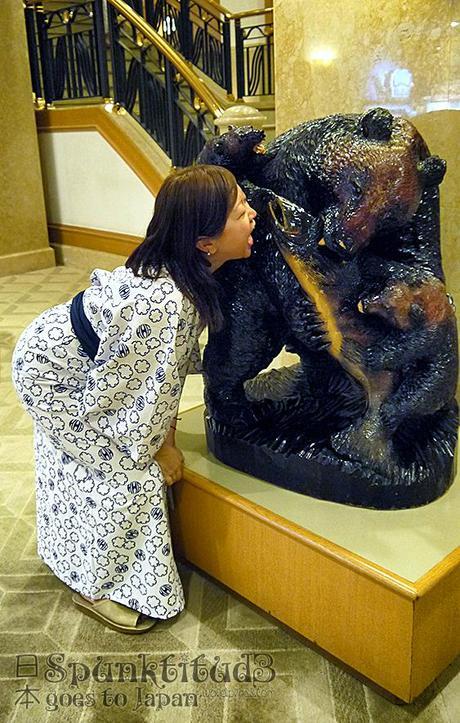
I couldn’t get enough of my seafood dinner, I had to share fish with the bears.
And off to enjoy my onsen! You cannot follow! :)
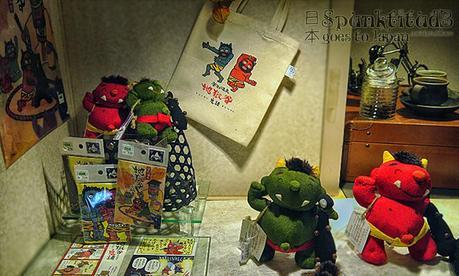
Get a cute Noboribetsu souvenir home before you leave – Whadda hell! :D
Noboribetsu brochures
Getting to Noboribetsu
By Train
Take the JR Muroran Line to Noboribetsu Station from Sapporo. The jorney is approximately one hour and costs about ¥3850. Board the bus from JR Noboribetsu Station to the final bus stop, Noboribetsu-onsen (13 mins).
There are several limited express trains to Noboribetsu as well:
- Hokuto and Super Hokuto (between Hakodate and Sapporo costing about ¥4160)
- Suzuran (between Sapporo and Higashi-Muroran costing about ¥6500).
Overnight trains
- Cassiopeia and Hokutosei trains to and from Ueno Station in Tokyo
- Twilight Express to and from Kyoto and Osaka in Kansai
- Hamanasu Sapporo-Aomori express (Aomori-Sapporo Hamanasu does not stop in Noboribetsu)
By Bus
A cheaper alternative than the train, Chuo (中央) bus and Dounan (道南) bus offer cheap, ¥1900 yen (one-way) trips to Noboribetsu in about 2 hours. There are eleven direct buses per day and boarding is at Hakodate Station and Chuo Bus Terminal [中央バスターミナル).
By Car
If driving from Sapporo or Shin Chitose Airport, the fastest way is the Doo Expressway, then taking the “Noboribetsu Higashi” exit.

